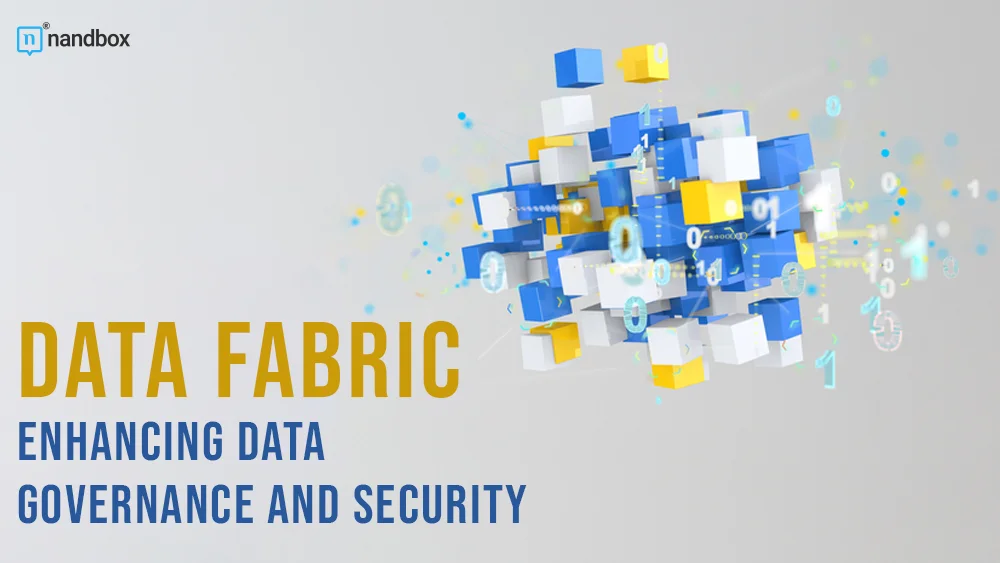Today’s fast-changing digital landscape requires organizations to rely on data more and more for decision-making, operational efficiency improvements, and exceptional customer experiences. Yet, with great power comes great responsibility. Managing and safeguarding vast amounts of sensitive information is becoming ever more demanding for heavyweight enterprises with complex data ecosystems. Enter data fabric, a holistic approach to data governance and security that promises a transformational change.
This blog post seeks to explore the profound effect of data fabric on data governance and security for enterprise solution architects and data governance professionals. By exploring its key features, how it addresses current challenges related to data governance, and its potential implications for security, you will gain an in-depth view of how this innovative framework could transform your organization’s data strategy.
Definition of Data Fabric
Data fabric is an architectural approach intended to provide an integrated and consistent view of an organization’s data, regardless of its source or structure, by unifying disparate sources into one layer that facilitates seamless data access, sharing, and management. With this strategy in place, organizations are able to break down silos, increase collaboration, and enhance visibility of their data assets.
Data Fabric in Modern Enterprises
Enterprises that manage large volumes of data across numerous systems and platforms rely on data fabric as an essential enabler of operational efficiency. It streamlines data workflows, reduces latency times, and enhances access to decision-maker-relevant information. Moreover, as more organizations adopt cloud solutions, data fabric offers a robust framework for overseeing data across environments while upholding data integrity and consistency.
It not only increases operational efficiency but is also integral in supporting emerging business models. With real-time analytics, machine learning, and artificial intelligence on the rise, organizations need access to and the ability to analyze their data quickly and effectively while maintaining control of it all at the same time. Data fabric gives enterprises this advantage while simultaneously keeping an eye on how advanced analytics capabilities may affect them.
Enhancing Data Governance Frameworks
Data Governance refers to the practice of overseeing data availability, usability, integrity, and security within an organization. Effective data governance frameworks ensure that data is accurate, consistent with relevant regulations, and compliant. However, traditional approaches often struggle to keep pace with modern data ecosystems’ increasingly complex ecosystems.
It provides a novel approach to data governance by providing an integrated platform for controlling information across an organization. With data fabric’s platform approach, organizations can ensure consistent policy enforcement, data lineage tracking, and compliance monitoring, which are all integral parts of an effective data governance strategy. By using data fabric effectively, they can streamline their processes while increasing effectiveness overall.
Data fabric excels at supporting real-time data governance. Which allows organizations to adapt quickly to changing circumstances and regulatory requirements without jeopardizing compliance. With its dynamic policies that adapt quickly when data changes occur. Data Fabric makes real-time adjustments possible without jeopardizing compliance or efficiency.
Strengthen Data Security with Data Fabric
Data breaches and cyber threats have never been more prevalent. Making the need for robust data security measures ever more critical. Data fabric enhances this protection by offering an array of controls designed to safeguard sensitive information across its lifecycle. By centralizing security protocols and policies into one framework, organizations can ensure a consistent approach toward data protection.
It allows organizations to seamlessly implement role-based access controls, data encryption, and masking. This ensures that only authorized users have access to sensitive information while also safeguarding it against possible interception by unapproved parties. Adding machine learning and AI technologies within the data fabric further strengthens threat detection/respond capabilities, allowing organizations to stay one step ahead of potential security breaches.
Compliance with Regulations
Data fabric offers enterprises operating in highly regulated industries an invaluable way to maintain compliance. By automating data governance processes and streamlining auditing procedures, organizations can easily demonstrate compliance with regulations like GDPR, HIPAA, and CCPA.
Automated compliance reporting streamlines the process of adhering to regulatory standards, alleviating data governance professionals of an additional task. Organizations can then focus on strategic initiatives rather than getting bogged down in compliance-related tasks. Data Fabric will play an integral part in enterprise data strategies in the coming years.
Data Fabric and Enterprise Data Strategies
As technology progresses, so too will the role of data fabric within enterprise data strategies. Integrating advanced analytics, AI, and machine learning will further expand its capabilities, allowing organizations to glean deeper insights from their data, providing more informed decisions for decision-making, optimizing operations, and driving innovation within enterprises. This development will empower enterprises with enhanced decision-making abilities, operations optimization, and innovation, driving innovation forward.
Data fabric will play a pivotal role in supporting the emerging trend of data democratization. By simplifying access and encouraging non-technical users to engage with data, organizations can foster an environment in which decision-making processes are driven by data alone across all levels of business operations.
With increasing environmental concerns, organizations must incorporate sustainability into their data strategies. Data fabric provides a great opportunity to create a more eco-friendly data ecosystem by optimizing data storage, reducing redundancies, and encouraging responsible usage. Leveraging this technology enables enterprises to align their data strategies with larger sustainability objectives for a more eco-friendly future.
Conclusion
Data fabric’s impact on data governance and security is profound and far-reaching. By offering an integrated approach to data management, data fabric improves operational efficiencies while strengthening governance frameworks and strengthening security measures. Understanding its benefits for enterprise solution architects and data governance professionals is vital when managing complex modern data ecosystems.
As organizations adapt and respond to new challenges, harnessing data fabric will become essential in unlocking its full potential. Businesses that invest in this technology and practices can create an agile data environment that supports strategic goals.
Are you aiming to explore the topic deeper? For those seeking to dive further into data management, engage with thought leaders in the field, attend industry conferences, or participate in online forums dedicated to data governance and security. Organizations can thrive in today’s data-driven landscape with an appropriate strategy in place.




